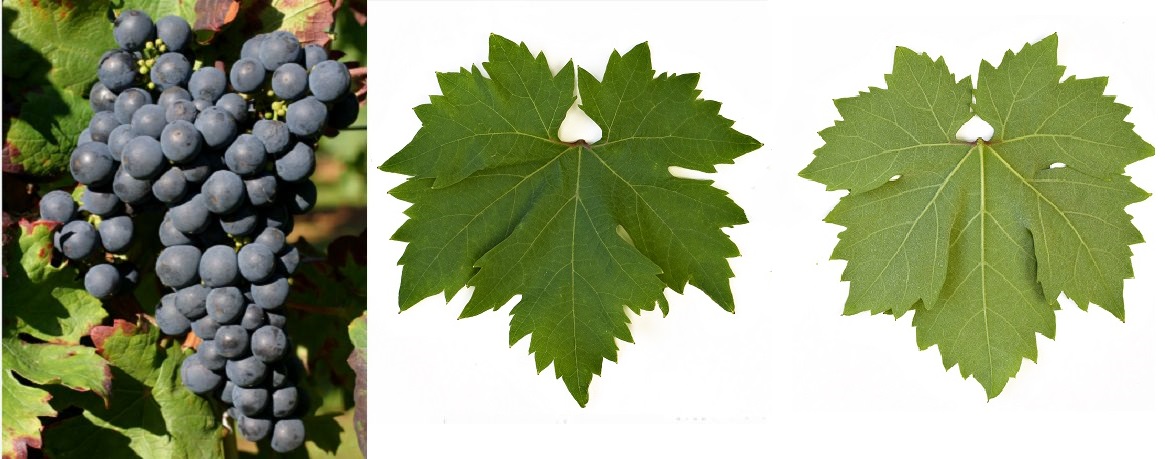Although the red grape variety originates from Croatia, it is mainly cultivated in California under the name Zinfandel. The German pronunciation is "Zin-fan-del", in American the "a" is swallowed and the name is pronounced as "Zinfn-dell" or "Zin" for short. According to DNA analyses carried out by Dr Carole Meredith and John Bowers at the University of California (Davis) in close collaboration with Croatian and Italian grapevine specialists from 1994 to 2011, the identity, which had been unclear for many decades, was clarified. Three varieties grown in Europe and one in the USA are identical:
- Tribidrag (also Crljenak Kaštelanski) from Croatia
- Primitivo from Italy
- Zinfandel from California
- Kratošija from Montenegro
The variety is therefore also referred to as ZPC = Zinfandel / Primitivo / Crljenak Kaštelanski. Although Primitivo and Tribidrag/Zinfandel are not 100% identical according to DNA analyses, they are considered to be one grape variety. According to the ampelographic rule, a variety is labelled according to the oldest name used, which is why the name Tribidrag, already mentioned in the 15th century, was suggested in the grape variety bible "Wine Grapes". See the history of identity clarification under Tribidrag.

Origin
There are still many Americans who (for reasons of national pride) claim the origin of the vine in America. However, both the vine species, namely Vitis vinifera, and the Croatian origin have now been clearly proven. The vine travelled from Europe to America around 200 years ago. In the 1820s, vine nursery owner George Gibbs in Long Island introduced various grape varieties from Vienna and Gumpoldskirchen(Lower Austria), including Zinfandel. It is possible that the name came about through mislabelling or confusion with the similarly named variety Zierfandler, which was also imported, but this is not certain. From 1835, it became a very popular grape variety in the north-east of the USA under the names Zinfendal, Zinfindal or Zinfendel table grape. It then arrived in California around 1850. During the Gold Rush (1848-1854), wine was the everyday drink of gold miners.
Hypotheses
Around 1885, Arpad Haraszthy claimed that his father Agoston Haraszthy (1812-1869) had introduced the vine to California around 1860; this unverifiable or false hypothesis persisted until the 1970s. The fact that it had come to America long before Haraszthy was clarified by the US historian and wine author Charles L. Sullivan. Around 1890, it became the dominant variety during the first Californian wine boom. At the beginning of the 20th century, most areas were destroyed by phylloxera. Some grafted vines survived and were used for replanting. In California's Amador County, there are still specimens that are over 100 years old. During Prohibition (1920 to 1933), the vine was the most common basis for illegal wine production. It remained popular afterwards and was the most common grape variety in the USA in the 1990s.

Characteristics
The two (three) varieties have developed somewhat differently over the last 200 years in terms of ripening time, susceptibility to disease and flavour. The medium-ripening Zinfandel (somewhat later than Primitivo) is sensitive to wet conditions and susceptible to botrytis. Fully ripe and unripe berries can often be mixed on one bunch, which makes harvesting difficult. It produces high-alcohol red wines with ageing potential. These are characterised by a characteristically spicy taste (even more so than Primitivo) with a variety of aromas of cinnamon, mint, chocolate, cloves, pepper, black cherries, blackberries and raspberries. The variety is said to be particularly good at expressing the character of a soil (terroir). In the USA, Zinfandel is used for rosé wines (White Zinfandel), light to high-alcohol red wines, mostly as single-varietal varietals and fortified dessert wines in the port style. The designations Zinfandel and Primitivo are permitted.
Acreage under cultivation
In 2016, a total of 18,551 hectares of vineyards were designated in the USA, with a downward trend. The vast majority of this is located in California with around 17,000 hectares, primarily Central Valley with 8,000 hectares, North Coast(Mendocino County, Sonoma County) and Sierra Foothills. A white variety (mutation) was found in San Joaquin County in 1999. The ZAP (Zinfandel Advocates & Producers) association has been in existence since 1991. Smaller areas also exist in the states of Arizona, Colorado, Illinois, Indiana, Massachusetts, New Mexico, New York, North Carolina, Ohio, Oregon, Tennessee, Texas and Washington. For all growing countries and quantities, see Tribidrag (Kym Anderson statistics).
Grape bunch and leaf: Ursula Brühl, Doris Schneider, Julius Kühn-Institut (JKI)
Vine with grapes: Shutterstock
Voices of our members

The Wine lexicon helps me to keep up to date and refresh my knowledge. Thank you for this Lexicon that will never end in terms of topicality! That's what makes it so exciting to come back often.
Thorsten Rahn
Restaurantleiter, Sommelier, Weindozent und Autor; Dresden